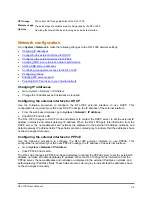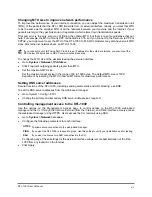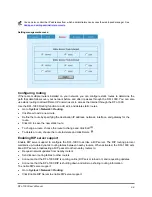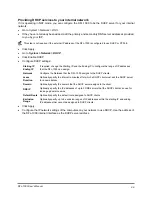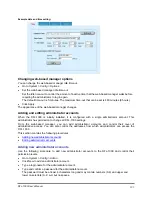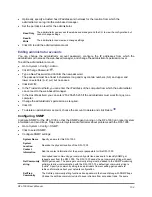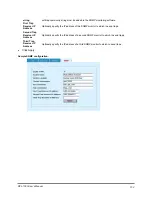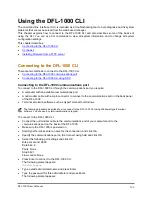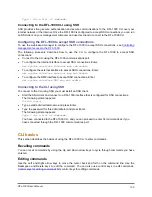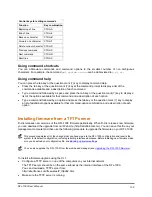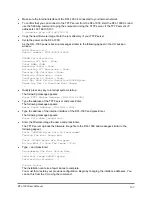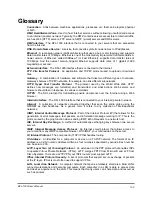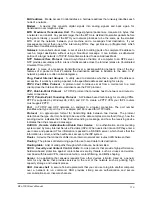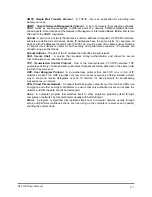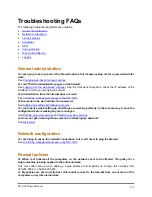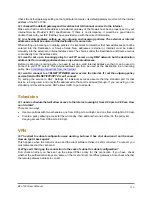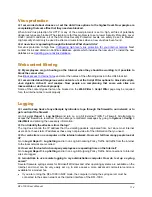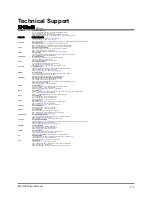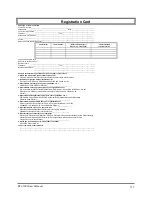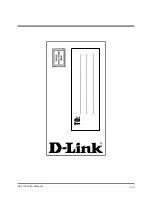
MAC address
: Media Access Control address, a hardware address that uniquely identifies each
node of a network.
Modem
: A device that converts digital signals into analog signals and back again for
transmission over telephone lines.
MTU
,
Maximum Transmission Unit
: The largest physical packet size, measured in bytes, that
a network can transmit. Any packets larger than the MTU are divided into smaller packets before
being sent. Ideally, you want the MTU your network produces to be the same as the smallest
MTU of all the networks between your machine and a message's final destination. If your
messages are larger than one of the intervening MTUs, they get broken up (fragmented), which
slows down transmission speeds.
Netmask
: Also called subnet mask. A set of rules for omitting parts of a complete IP address to
reach a target destination without using a broadcast message. It can indicate a subnetwork
portion of a larger network in TCP/IP. Sometimes referred to as an Address Mask.
NTP
,
Network Time Protocol
: Used to synchronize the time of a computer to an NTP server.
NTP provides accuracies within a tens of milliseconds across the Internet relative to Coordinated
Universal Time (UTC).
Packet
: A piece of a message transmitted over a packet-switching network. One of the key
features of a packet is that it contains the destination address in addition to the data. In IP
networks, packets are often called datagrams.
Ping, Packet Internet Grouper
: A utility used to determine whether a specific IP address is
accessible. It works by sending a packet to the specified address and waiting for a reply.
POP3, Post Office Protocol
: A protocol used to retrieve e-mail from a mail server to a mail
client across the Internet. Most e-mail clients use the POP protocol.
PPP, Point-to-Point Protocol
: A TCP/IP protocol that provides host-to-network and router-to-
router connections.
PPTP, Point-to-Point Tunneling Protocol
: A Windows-based technology for creating VPNs.
PPTP is supported by Windows 98, 2000, and XP. To create a PPTP VPN your ISP's routers
must support PPTP.
Port
: In TCP/IP and UDP networks, an endpoint to a logical connection. The port number
identifies what type of port it is. For example, port 80 is used for HTTP traffic.
Protocol
: An agreed-upon format for transmitting data between two devices. The protocol
determines the type of error checking to be used, the data compression method (if any), how the
sending device indicates that it has finished sending a message, and how the receiving device
indicates that it has received a message.
RADIUS
,
Remote Authentication Dial-In User Service
: An authentication and accounting
system used by many Internet Service Providers (ISPs). When users dial into an ISP they enter a
user name and password. This information is passed to a RADIUS server, which checks that the
information is correct, and then authorizes access to the ISP system.
Router
: A device that connects LANs into an internal network and routes traffic between them.
Routing
: The process of determining a path to use to send data to its destination.
Routing table
: A list of valid paths through which data can be transmitted.
SCCU
,
Security and Content Control Units
: D-Link products that provide high-performance,
hardware-based protection against content-based security threats, such as viruses and worms,
combined with firewall, VPN, intrusion detection, content filtering, and traffic shaping.
Server
: An application that answers requests from other devices (clients). Used as a generic
term for any device that provides services to the rest of the network such as printing, high
capacity storage, and network access.
SSH
,
Secure shell
: A secure Telnet replacement that you can use to log into another computer
over a network to run command. SSH provides strong secure authentication and secure
communications over insecure channels.
DFL-1000 User’s Manual
110

